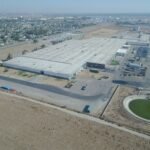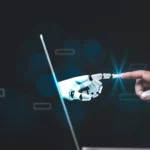Understanding Smart Factories
Smart factories represent a transformative evolution in the manufacturing sector, driven by advances in technology and the integration of sophisticated digital systems. At their core, smart factories utilize the principles of industrial automation, enhanced by the Internet of Things (IoT), artificial intelligence (AI), and data analytics, creating a highly interconnected and efficient production environment. This modernized approach to manufacturing enables an unprecedented level of automation and real-time monitoring of production processes, facilitating enhanced decision-making capabilities.
The significance of smart factories in today’s manufacturing landscape cannot be overstated. Unlike traditional manufacturing setups, which often rely on manual processes and siloed systems, smart factories leverage a multitude of interconnected devices and systems. This transformation leads to improved visibility across the production floor, enabling manufacturers to track equipment performance, optimize resource utilization, and respond swiftly to changing demands. In this context, IoT technologies play a vital role, connecting machinery, tools, and supply chains, allowing for seamless data exchange and real-time adjustments to production schedules.
Moreover, the integration of advanced robotics within smart factories has further revolutionized production processes. Collaborative robots, or cobots, are designed to work alongside human operators, enhancing productivity while reducing the risks associated with repetitive tasks. These systems can adapt to new functions, making them essential for the growing demand for personalized products manufactured on demand. Such flexibility is a defining advantage of smart factories, as they are well-suited to meet the varying needs of customers in today’s competitive marketplace.
In conclusion, smart factories signify a pivotal shift in manufacturing, prioritizing efficiency, flexibility, and responsiveness through the integration of IoT technology, advanced robotics, and data analytics. Their ability to produce customized products with enhanced operational efficiency positions them as the future of manufacturing.
The Role of AI in Automation
Artificial intelligence (AI) serves as a cornerstone in revolutionizing automation practices within smart factories. By utilizing sophisticated algorithms, AI can optimize production processes, enabling manufacturers to enhance efficiency while minimizing operational costs. The integration of AI allows for a more adaptable and responsive manufacturing environment, aiding in the timely fulfillment of customer demands.
One of the key applications of AI in automation is its ability to enhance decision-making processes. Through data analysis and real-time feedback, AI algorithms can identify trends and anomalies that human operators may overlook. This capability fosters a data-driven approach to production management, improving the accuracy of inventory forecasting and resource allocation. Furthermore, the utilization of machine learning techniques allows systems to continuously learn from past operations, refining their predictive capabilities and enabling improved operational performance.
AI technologies such as computer vision play a crucial role in automating quality control. By employing advanced imaging techniques, smart factories can monitor product quality during production, ensuring that defects are identified and corrected promptly. This effectively reduces waste and enhances the overall quality of manufactured goods. Additionally, natural language processing (NLP) facilitates seamless communication between machines and human operators, streamlining workflows and enhancing collaboration throughout the manufacturing process.
Moreover, predictive maintenance powered by AI algorithms significantly lowers downtime costs associated with unanticipated equipment failures. By analyzing historical data and monitoring machine performance in real-time, AI can predict maintenance needs before a failure occurs, thereby extending the lifespan of machinery and ensuring optimal operational efficiency.
In summary, the incorporation of AI within smart factory automation enhances production processes through improved decision-making, quality control, and maintenance strategies. As technology continues to advance, the role of AI in driving automation will undoubtedly expand, shaping the future of manufacturing.
Case Studies of AI-Driven Automation
In recent years, numerous industries have successfully integrated AI-driven automation into their manufacturing processes, demonstrating significant operational improvements. One notable example is Siemens, which has implemented AI technologies in its Amberg electronics plant in Germany. Here, artificial intelligence analyzes production data in real time, enabling predictive maintenance that minimizes downtime and reduces operational costs. The integration of AI allowed Siemens to achieve a 30% increase in production efficiency, showcasing the potential of AI-driven automation in enhancing industrial productivity.
Another compelling case is that of BMW, where AI-powered robotics are used in assembly lines to optimize workflow. The company faced challenges related to workplace safety and labor-intensive processes. By employing AI-driven automation solutions, BMW not only improved safety metrics but also enhanced product quality. The robots, equipped with machine learning algorithms, significantly reduced the error rate in assembly, resulting in a 20% improvement in product quality. This case illustrates how AI-driven automation can address both quality and safety concerns in manufacturing environments.
Additionally, the food and beverage industry has also witnessed remarkable advancements through AI-driven automation. For instance, Coca-Cola has utilized AI to enhance its supply chain operations. The company faced challenges surrounding demand forecasting and inventory management. By implementing AI algorithms to analyze market data, Coca-Cola improved its forecasting accuracy by 15%. This advancement enabled better inventory control, significantly reducing waste and costs associated with overproduction.
These case studies reveal that AI-driven automation is reshaping the manufacturing landscape across various sectors. The integration of AI technologies not only addresses operational challenges but also produces measurable outcomes. As companies continue to adopt AI solutions, the possibilities for efficiency, cost savings, and quality enhancements will likely multiply, marking a new era for smart factories.
Future Trends in Smart Factory Automation
The landscape of smart factory automation is rapidly evolving, driven primarily by advancements in artificial intelligence (AI) and machine learning technologies. As industries increasingly adopt AI-driven solutions, several key trends are anticipated to shape the future of manufacturing processes. One of the most significant developments is the rise of autonomous systems capable of operating independently to optimize efficiency and productivity. These systems leverage advanced sensors and AI algorithms to make real-time decisions, reducing reliance on human intervention and enabling faster production cycles.
Another noteworthy trend is the integration of collaborative robots, commonly referred to as cobots, into manufacturing workflows. Unlike traditional industrial robots, which operate in isolation from human workers, cobots are designed to work alongside personnel, enhancing safety and efficiency. This collaboration can lead to improved productivity and more flexible manufacturing processes, allowing companies to respond swiftly to changing market demands. As AI continues to mature, the functionality and capabilities of these robots will expand, fostering even greater collaboration between humans and machines.
However, the transition to AI-driven automation is not without its challenges. Cybersecurity risks pose a significant threat to smart factories, as increased connectivity among machines creates potential vulnerabilities for digital breaches. As manufacturers adopt interconnected systems, robust cybersecurity measures must be developed and implemented to safeguard sensitive data and infrastructure. Additionally, the workforce may require significant reskilling to adapt to new technologies and methodologies associated with automation. Organizations will need to invest in training programs to equip employees with the necessary skills for a successful transition into AI-enhanced roles.
In conclusion, the future of smart factory automation is poised for monumental changes driven by AI and machine learning. The rise of autonomous systems and collaborative robots represents a pivotal shift in manufacturing, while addressing cybersecurity and workforce challenges will be essential to fully realize the potential of AI-driven automation.







